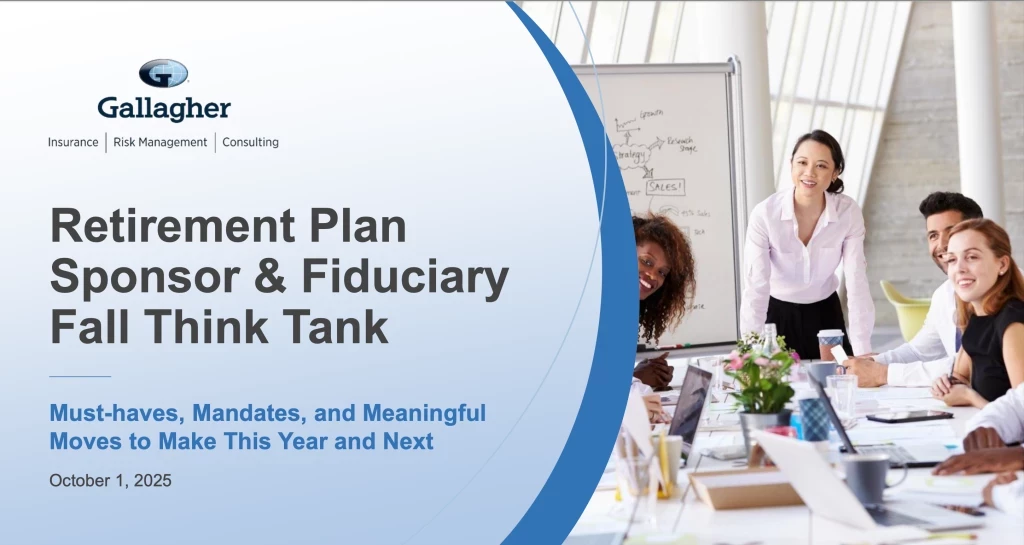5 Ways to Promote Healthy Aging in the Workplace
Add bookmark"How Old Would You Be If You Didn’t Know How Old You Are?"
This quote by Satchel Paige got me thinking. As soon as we’re born, we begin our inevitable journey to the end. The question then becomes, "What steps can we take to live as fully as possible for as long as possible?" It’s never too soon or too late to design a game plan, and the earlier you begin, the greater the ROI on your efforts.
Health and wellness programming is often heavily focused on reactively managing a combination of acute events and chronic conditions, and for good reason—at many companies, five percent of the population or less accounts for fifty percent or more of healthcare spend. Increasingly, however, the spotlight is expanding to encompass screening and prevention, keeping the healthy healthy, and taking preventive steps so the not-so-healthy don’t get any worse.
Every Stage and Every Age
Given that we all have an "expiration date," isn’t it time to shift our thinking and invest dollars in healthy aging? The ideal mix would incorporate approaches applicable to every stage of life—Millennials through Matures. Those with "receding youth" certainly don’t have a market on the desire to live age as only a number.
Live Long and Prosper
In fact, research indicates those who are the longest-lived across the globe have several things in common1:
- low rate of obesity and tobacco use
- regular physical activity
- manage stress and do not dwell on problems
- have a positive attitude on life
- stay connected and have a social network
- have some form of spiritual practice
Additionally, a recent Johns Hopkins study2 revealed four factors which can reduce one’s risk of a premature death by 80%:
1. tobacco abstinence
2. optimal weight
3. regular physical activity
4. healthy eating, by way of the Mediterranean diet
Studies also tell us:
- Sleep is central for good health. It impacts our immune system, hormonal balance and metabolism, as well as our brain health. Sustained sleep deficits increase the risk of chronic conditions, such as diabetes, hypertension, heart disease, obesity, and depression.3
- Sitting too much can have a major negative impact on our health, even if we’re physically active. For example, women who sit more than 6 hours per day have a 40% greater risk of premature death than those who sit for less than 3 hours per day.4
Next Generation Employers Embrace Lifelong Well-Being
Aging is a fact of life that none of us can escape. Leverage this singular universal truth to develop programs and workplace policies based on the evidence. Helping your employees stay physiologically younger and more productive, creative, and happy has implications for your bottom line. It also can be the difference between simply earning profit and becoming an industry leader.
5 Tips and Questions to Promote Healthy Aging in the Workplace
1. If you have a company cafeteria:
- Offer dishes aligned with a Mediterranean diet and label them as such; make it easy for employees to identify and select foods which support healthy aging.
- Think about lower pricing for less healthy options and placing Mediterranean diet items prominently upfront, with less healthy options in a less convenient location.
- Likewise, identify foods that support brain health so employees begin to connect the dots and recognize that food does not have to be the enemy—and can actually be healing.
- List healthier options at the top of the selections and include information such as calories, fat, sugar, salt, and fiber content.
2. Acknowledge that a high percentage of the population is feeling stressed in the workplace and may experience such distress on a daily basis. First, implement a stress management program which provides participants with tools to recognize stress triggers in the moment and modalities to respond rather than react reflexively. Then take it a step further to examine "conditions on the ground" and determine if company culture and HR policies can be enhanced to help address the stress burden:
- DE-STRESS IN ACTION: For example, is there an expectation that people be connected 24/7/365? Is it ok for employees to work in 90-minute blocks and take a break—an action which contributes to productivity and focus? Do employees actually take the time to eat lunch, or are they multi-tasking while they eat, which increases the likelihood of less healthy food choices in portions which contribute to weight management challenges?
3. Does the work environment support physical activity via benefit design, on-site resources, and incentives? Do you enable employees to avoid a constantly sedentary day at the office, on the road, or in the plant? NEAT (non-exercise activity thermogenesis—energy expended in activities which are not sleeping, eating, or sports-like exercise) can positively impact weight management. Examples include:
- taking the stairs instead of the elevator
- parking further away from the entrance and walking the extra steps
- getting up and walking around when you take a break
4. Are employees afforded opportunities in a systematic way to learn new things and develop on the job so they feel what they do is meaningful? Does their work connect them to others, and support a positive outlook in the workplace?
5. Finally, as a leader, are you walking the talk, taking care of yourself, and serving as a role model for healthy aging? How young would you be if you didn’t know how old you are?
References:
1. Willcox BJ, Willcox, and Ferbucci L. Secrets of Healthy Aging and Longevity from Exceptional Survivors Around the Globe: Lessons from Qctogenarians to Supercentenarians. J Gerontol A Biol Sci Med Sci (2008) 63 (11): 1181-1185:http://biomedgerontology.oxfordjournals.org/content/63/11/1181.extract
2. Ahmed HM, Blaha MJ, Nasir K et.al. Low-Risk Lifestyle, Coronary Calcium, Cardiovascular Events, and Mortality: Results from MESA: Am. J. Epidemiol. (2013) doi: 10.1093/aje/kws453: http://aje.oxfordjournals.org/content/early/2013/05/30/aje.kws453.abstract
3. Sleep and Health: http://healthysleep.med.harvard.edu/need-sleep/whats-in-it-for-you/health
4. van der Ploeg HP, Chey T, Korda RJ et.al. Sitting Time and All-Cause Mortality Risk. Arch Intern Med. 2012 Mar 26;172(6):494-500. doi: 10.1001/archinternmed.2011.2174.
Learn More:
- Blue Zones: http://www.bluezones.com/about/
- Be Less Stressed: http://peopletweaker.com/index.php/blog?start=12
- What’s On Your Plate? Smart Choices for Healthy Aging: http://www.nia.nih.gov/health/publication/whats-your-plate-smart-food-choices-healthy-aging/important-nutrients-know
- Workplace Stress: http://www.catalyst.org/knowledge/work-stress-0
- NEAT Exercises For Couch Potatoes: http://www.huffingtonpost.com/2012/07/26/neat-exercise_n_1680454.html?view=print&comm_ref=false
- Workout to Go: A Sample Exercise Routine from the National Institute on Aging at NIH: http://www.nia.nih.gov/health/publication/workout-go
















